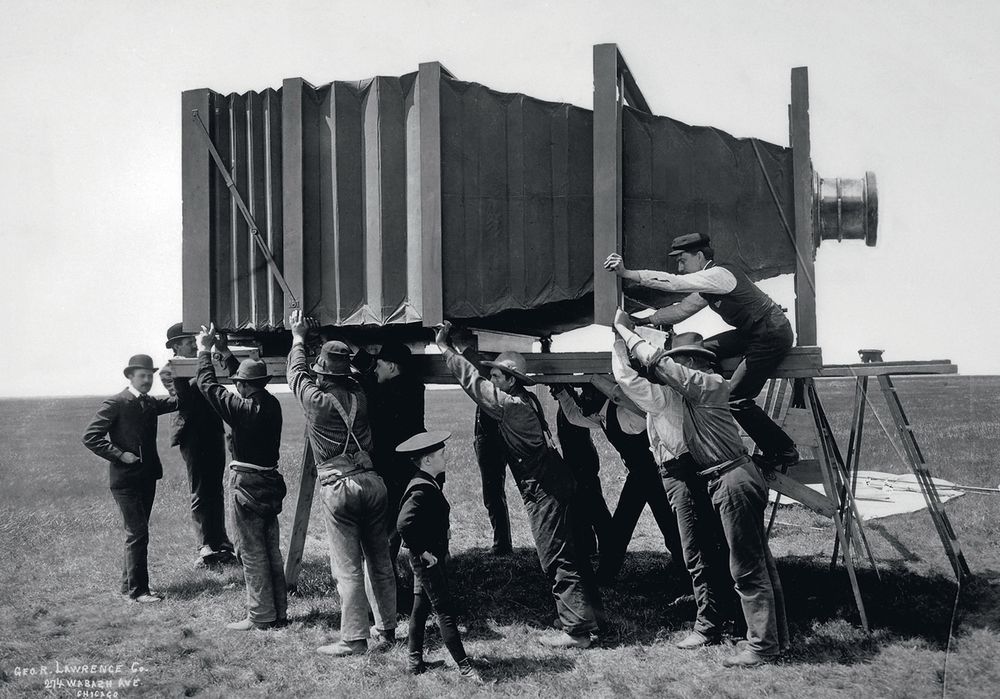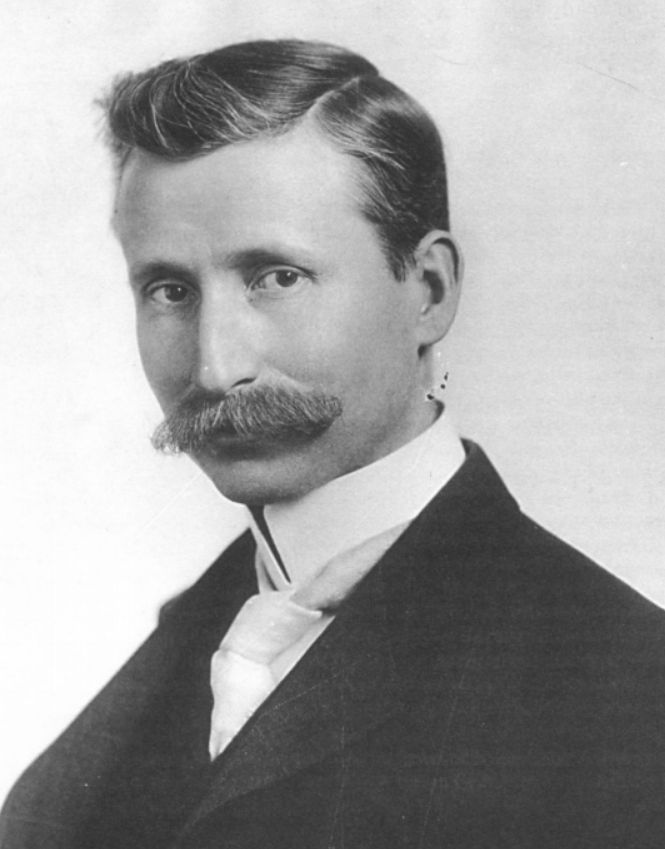In 1899, the Chicago & Alton Railway introduced a new intercity rail service between Chicago and St. Louis.
The Alton Limited was billed The Handsomest Train In The World.
The windows were of the same size, shape and style from the mail car to parlor car.

All the cars were mounted on standard six-wheel trucks.
Even the hood of the locomotive had the exact height of the roofs of the cars.
George Lawrences Mammoth Camera built to photograph the Alton Limited.

The railroad company wanted a picture clicked of their prized creation in its entirety, all in one frame.
But the company rejected the idea; they wanted a flawless picture of their flawless train.
They also insisted that the length of the photograph must not be less than eight feet.

George Raymond Lawrence
Accepting the challenge, Lawrence sought the assistance of camera manufacturer J.
When fully extended on steel-track wheels, the bellows measured twenty feet.
From there, a padded van took the camera to a suitable location in an open field.

At the distance stood the Alton Limited.
The Alton Limited photographed by George Raymond Lawrence.
Lawrence made three gargantuan prints from the negative and sent them to Paris to be exhibited at the Exposition.

They believed the photograph was a composite and hence a fake.
Eventually, it earned Lawrence the ‘Grand Prize of the World for Photographic Excellence’.
The Mammoth Camera was just one of many inventions of photographic genius George Raymond Lawrence.

San Francisco in ruins photographed by George Raymond Lawrence.
A train of kites Lawrence used to hoist his camera.
George Lawrence was also a pioneer in flash photography.
He invented a flash powder that was brighter and created less smoke than magnesium that photographers normally used.
This allowed him to take large scale indoor photographs with absolute safety.
Another large-scale photograph by George Lawrence.
Lawrence built a camera and the objective with a diameter of about 1 meter for this photograph in 1903.